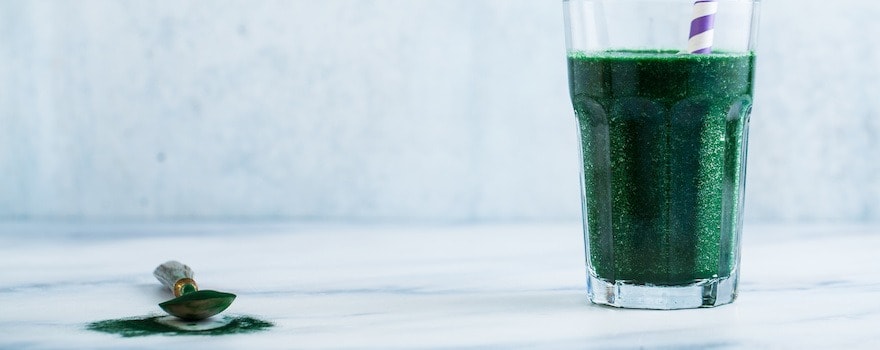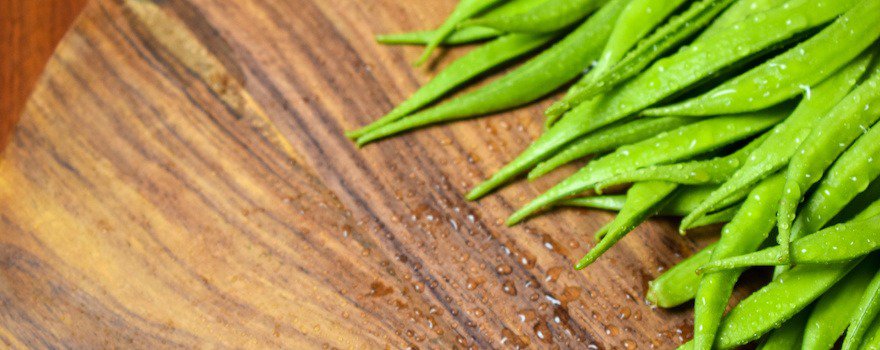BENEFITS OF GUAR GUM
✓ Helps with weight loss
✓ Supports digestive health
✓ Reduces cholesterol levels
✓ Improves diabetes
✓ Regulates blood pressure
What is guar?
Guar is an annual herbaceous plant with the scientific name Cyamopsis tetragonoloba. Also called “four-winged cyamopsis,” “guar bean,” or “Indian bean,” it belongs to the large family of legumes (Fabaceae) like griffonia or astragalus, as well as lentils. Native to India and Pakistan, guar is now found in other countries with hot, dry, or semi-arid climates: Africa, the United States, Australia…
Capable of reaching up to 2 meters in height, this plant has hairy leaves and small pink flowers. After flowering, it produces bean-like pods or seeds, each containing several brown seeds.

Once harvested, the seeds are ground to produce the well-known “guar gum.” It takes the form of a cream-white powder, odorless and neutral in taste.
Guar gum is a polysaccharide, a macromolecule in the carbohydrate family. It is primarily composed of galactomannan, a soluble plant fiber also present in carob gum or fenugreek gum. In the seed, this substance acts as a reserve of water and sugar and is essential for germination.
The food industry uses guar gum as a stabilizer, emulsifier, and vegetable thickener (known as additive E412). However, it also offers numerous health benefits. Several studies have highlighted its effectiveness in aiding weight loss, supporting digestive health, reducing cholesterol levels, and improving diabetes. Guar gum may also be beneficial for regulating blood pressure.
📚 Also read | Best Appetite Suppressant: A Pharmacist’s Opinion
Nutritional Composition
- Sugars : galactose and mannose
- Soluble and Insoluble Fibers : galactomannan
- Proteins
- Fats
- Water
Benefits of Guar Gum
🏃♂️ Aids in Weight Loss
Guar gum can contain up to 75% soluble fibers. These fibers promote satiety, reduce snacking, and slow gastric emptying (the passage of food from the stomach to the intestines).
On one hand, guar acts as a natural appetite suppressant. Like chia seeds or psyllium, its soluble fibers swell and turn into a viscous gel once in the stomach, exerting a satiating effect. They also slow digestion to further prolong satiety. Guar helps limit appetite and reduce snacking throughout the day.
Moreover, soluble fibers slow the absorption of fats (lipids) and carbohydrates (sugars) into the bloodstream. When these enter too quickly, they are stored in the body as fat. This is why this food can be a valuable aid for weight loss.
This study by the University of Gothenburg (Sweden), conducted on obese patients, shows how guar gum significantly reduced hunger and controlled the metabolism of carbohydrates and lipids.
♻️ Supports Digestive Health
Consuming guar gum is also beneficial for optimizing bowel transit, nourishing the microbiome, and relieving gastrointestinal issues.
The fibers it contains help alleviate constipation, diarrhea, flatulence, as well as bloating and abdominal pain. Guar has also proven effective in reducing symptoms associated with irritable bowel syndrome (IBS) or in cases of SIBO (Small Intestinal Bacterial Overgrowth).
Guar gum notably improves the consistency and frequency of stools. It also beneficially alters the composition of the gut microbiome (previously called “intestinal flora”). Thus, it reduces the quantity of pathological bacteria of the Clostridium genus, responsible for severe diarrhea.
This study from the Federico II University of Naples (Italy) conducted on patients suffering from irritable bowel syndrome shows how guar gum relieved their symptoms.
This other study from the University of São Paulo (Brazil), conducted on women, demonstrates the effectiveness of guar gum in relieving constipation and improving intestinal function.
🍳 Reduces Cholesterol Levels
Guar gum shows positive effects in reducing LDL cholesterol or “bad cholesterol” levels. It can thus be very useful for people suffering from hypercholesterolemia.
It acts within the body through different mechanisms: on one hand, it reduces cholesterol absorption in the blood. On the other hand, it increases bile production by liver cells, which is involved in cholesterol elimination. Finally, guar gum increases HDL cholesterol or “good cholesterol” levels.
This study from the Alcohol Drug Information Service (ADIS) of New Zealand, conducted on patients with hypercholesterolemia, shows how guar gum decreases total cholesterol levels.
This other study from the University of Eastern Finland, also conducted on patients with hypercholesterolemia, demonstrates its lipid-lowering effects.
🍭 Improves Diabetes
Numerous studies have highlighted the potential of guar gum to reduce blood sugar and insulin levels.
The soluble fibers contained in guar improve blood sugar control and insulin sensitivity in people with type 2 diabetes. By slowing glucose absorption, they prevent glucose spikes after meals. They also prevent certain complications associated with diabetes such as cardiovascular diseases.
This study from the University of Helsinki (Finland), conducted on patients with diabetes mellitus, shows the benefits of guar gum on glycemic control and lipid concentrations.
This other study from the University of Gothenburg (Sweden), conducted on healthy men, confirms the potential of guar in diabetes treatment.
❤️ Regulates Blood Pressure
Guar gum also has beneficial effects on blood pressure. It helps relieve postprandial hypotension (PPH) and reduce systolic blood pressure in people with hypertension and/or overweight.
This property is largely due to the plant proteins contained in guar gum. They play an important role in blood pressure. Therefore, consuming guar can be interesting for the treatment of mild hypertension.
This study from the University of Gothenburg (Sweden), conducted on patients with hypertension, demonstrates that guar gum exerts a lowering effect on blood pressure.

How to consume guar?
Guar in Tablets
Capsules or tablets contain guar gum powder obtained by grinding the seeds of Cyamopsis tetragonoloba. It is an easily found, convenient, and tasteless dietary supplement.
For good results, the capsules should be sufficiently dosed with guar gum powder (300 mg/capsule minimum). Preferably choose capsules without additives and that are plant-based.
Guar in Powder
Guar powder is a natural, minimally processed form with a neutral taste. It simply dissolves in a glass of cold or hot water. The formed paste should not be swallowed directly but must be chewed thoroughly.
In cooking, it advantageously replaces starch, sugar, or fats. Naturally gluten-free, it is used as a thickening and binding agent for savory or sweet recipes, in sauces, soups, creams… Lastly, it lightens doughs and bakery preparations (breads, brioches…).
Guar gum powder can also be used to add consistency to your homemade cosmetics recipes: creams, masks, massage gels…
Guar and Medicinal Plants

To improve digestive health, guar is even more effective when associated with natural probiotics like kefir or spirulina.
To support weight loss, guar is combined with fat-burning foods like matcha tea or guarana.
To reduce bad cholesterol levels, complement your intake of guar with Brazil nuts or basil seeds.
Consume Sustainably: Favor Organic and Fair Trade Guar
✓ Today, India is mainly producing guar, exporting 600,000 tons globally each year. The country alone represents 80% of world production. Preferably, choose guar gum from organic farming to avoid pesticide residues in the final product.
✓ In the state of Rajasthan, northwest India, the cultivation of guar is a significant source of income for local producers. Do not hesitate to choose guar from fair trade and solidarity sectors to support their work and contribute to the development of the poorest regions.

Dosage
It is recommended not to consume more than 10 g of guar gum per day.
Guar capsules are simply taken with a large glass of water. 15 minutes before meals and optionally accompanied by a snack (fruit, slice of bread…).
A 10-day course can be interesting for weight loss as part of a healthy and balanced diet.
- Guar in tablets: 3 to 6 capsules per day for 300 mg capsules
- Guar in powder: 1 level teaspoon per day
Contraindications and Side Effects
The consumption of guar has certain contraindications:
- As a precaution, guar is not recommended for pregnant or breastfeeding women and young children
- Due to its effect on insulin spikes, people with insulin-dependent diabetes should avoid consuming it
- People allergic or intolerant to soy-based products should consume guar with caution as it may contain traces of soy proteins
- Guar can interact with certain antidiabetic medications and antihyperglycemic agents (metformin)
Excessive consumption of guar may lead to the following adverse effects:
- Flatulence
- Abdominal cramps
- Bloating
- Intestinal blockages
- Diarrhea
If you experience side effects, stop your consumption and consult a doctor.
History, Culture and Market of Guar
Today, guar is primarily cultivated for the food, cosmetic, and pharmaceutical industries. More surprisingly, it is also used in oil and gas extraction. For 20 years, the production of guar has been boosted by the demand from multinationals and shale gas exploiters.
During drilling, water injected at high pressure is combined with guar gum, which thickens it to better penetrate porous rock. It is also said to revive certain depleted gas and oil wells. The price of guar gum has continuously increased, reaching $11,000 a ton in 2012.
While this growing demand ensures income for many farmers, it unfortunately promotes very polluting processes.
Report prepared by Julia Perez and Charlotte Jean
Sources and Scientific Studies
M Krotkiewski, 1984. Effect of guar gum on body weight, hunger ratings and metabolism in obese subjects.
Luigi Russo, Paolo Andreozzi, Francesco P Zito, Letizia Vozzella, Ivana G Savino, Giovanni Sarnelli, Rosario Cuomo, 2015. Partially hydrolyzed guar gum in the treatment of irritable bowel syndrome with constipation: effects of gender, age, and body mass index.
Dan Linetzky Waitzberg, C C Alves Pereira, L Logullo, T Manzoni Jacintho, 2012. Microbiota benefits after inulin and partially hydrolyzed guar gum supplementation: a randomized clinical trial in constipated women.
P A Todd, P Benfield, K L Goa, 1990. Guar gum. A review of its pharmacological properties, and use as a dietary adjunct in hypercholesterolemia.
A Aro, Matti I J Uusitupa, E Voutilainen, T Korhonen, 1984. Effect of guar gum in male subjects with hypocholesterolemia.
P H Groop, A Aro, S Stenman, L Groop, 1993. Long-term effects of guar gum in subjects with non-insulin-dependent diabetes mellitus.
K Landin, G Holm, L Tengborn, U Smith, 1992. Guar gum improves insulin sensitivity, blood lipids, blood pressure, and fibrinolysis in healthy men.
M Krotkiewski, 1987, Effect of guar gum on the arterial blood pressure.



